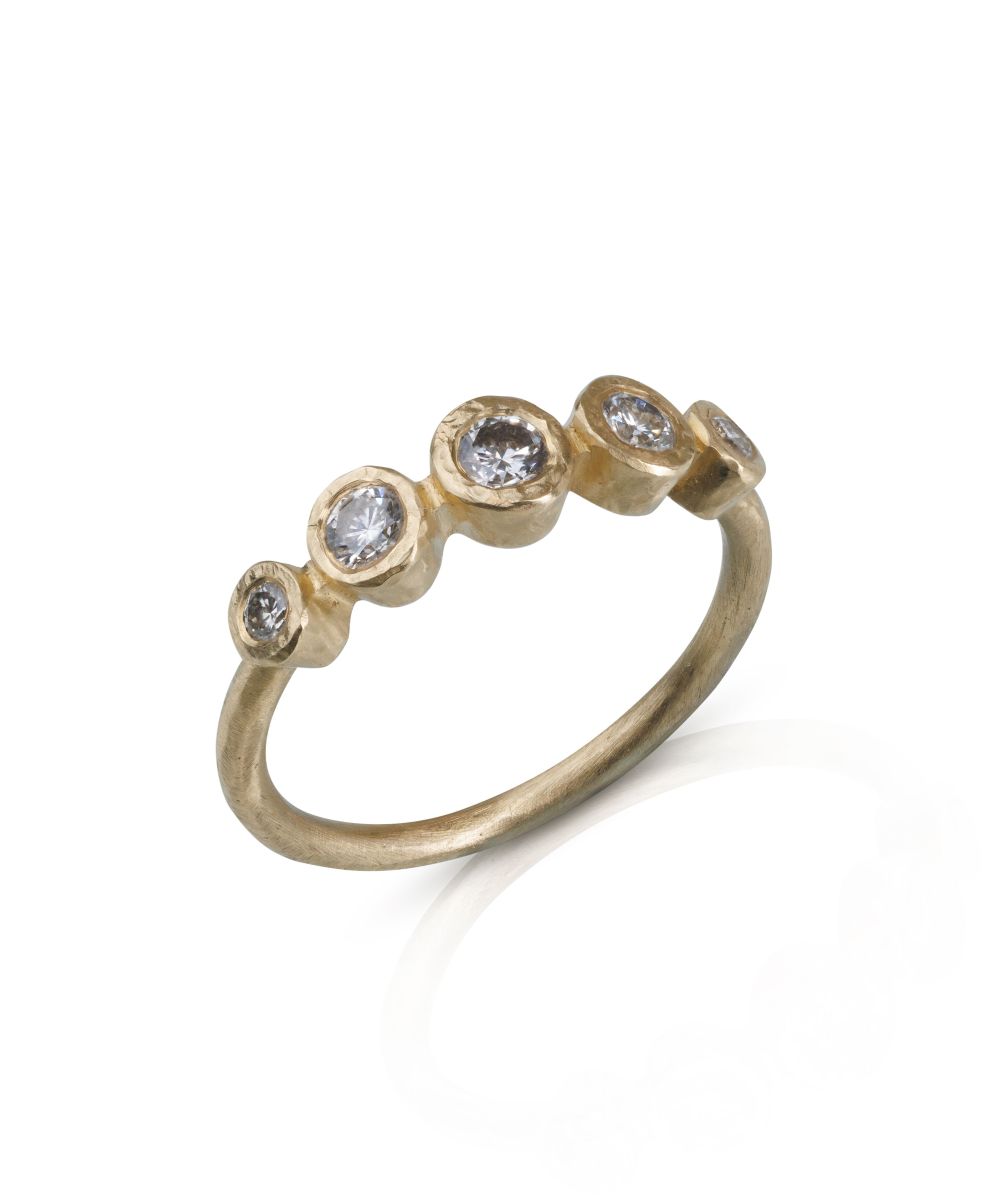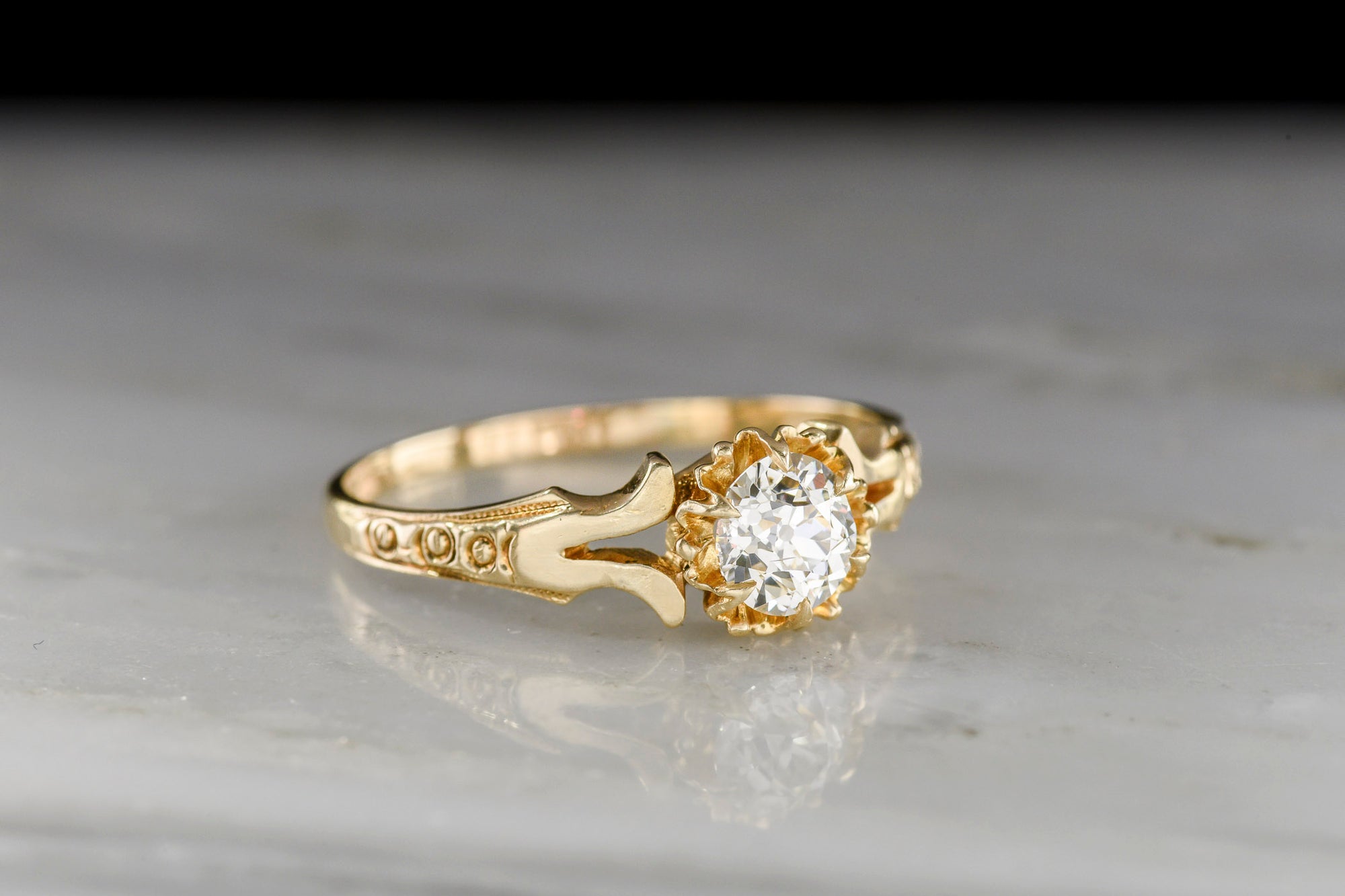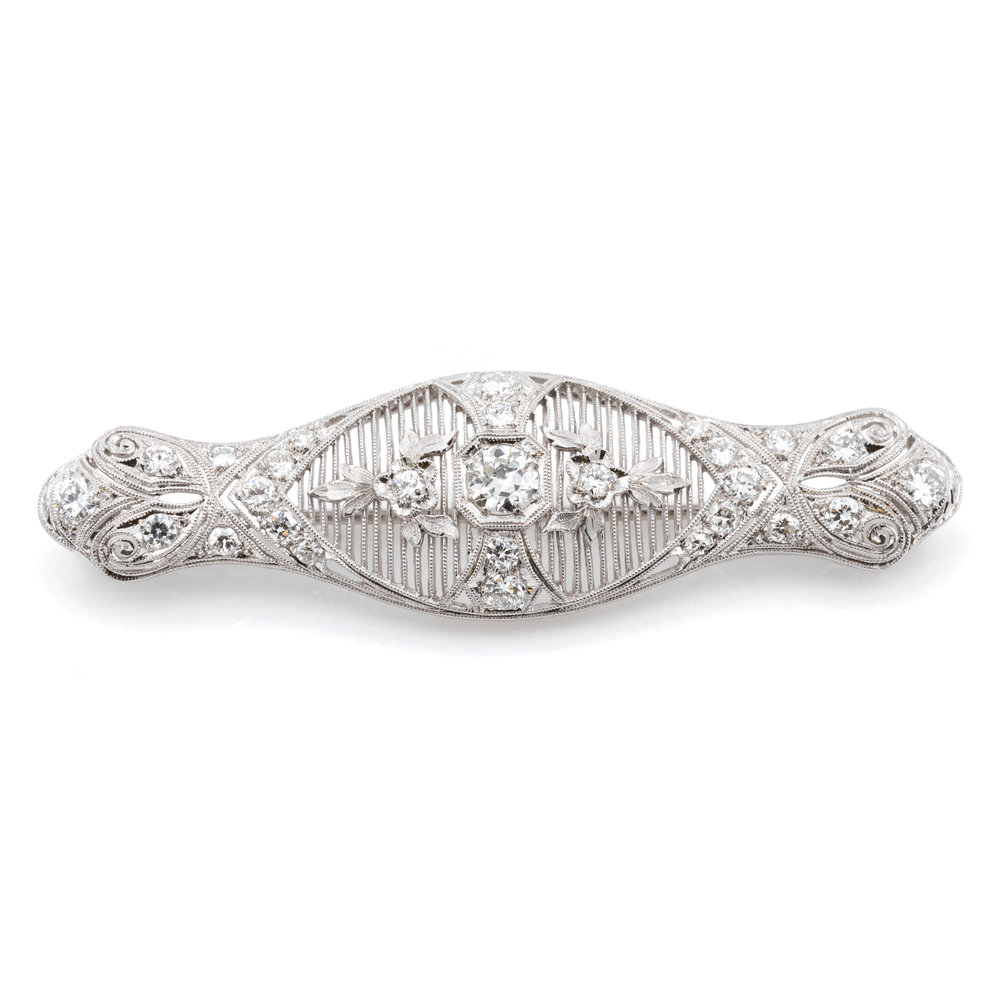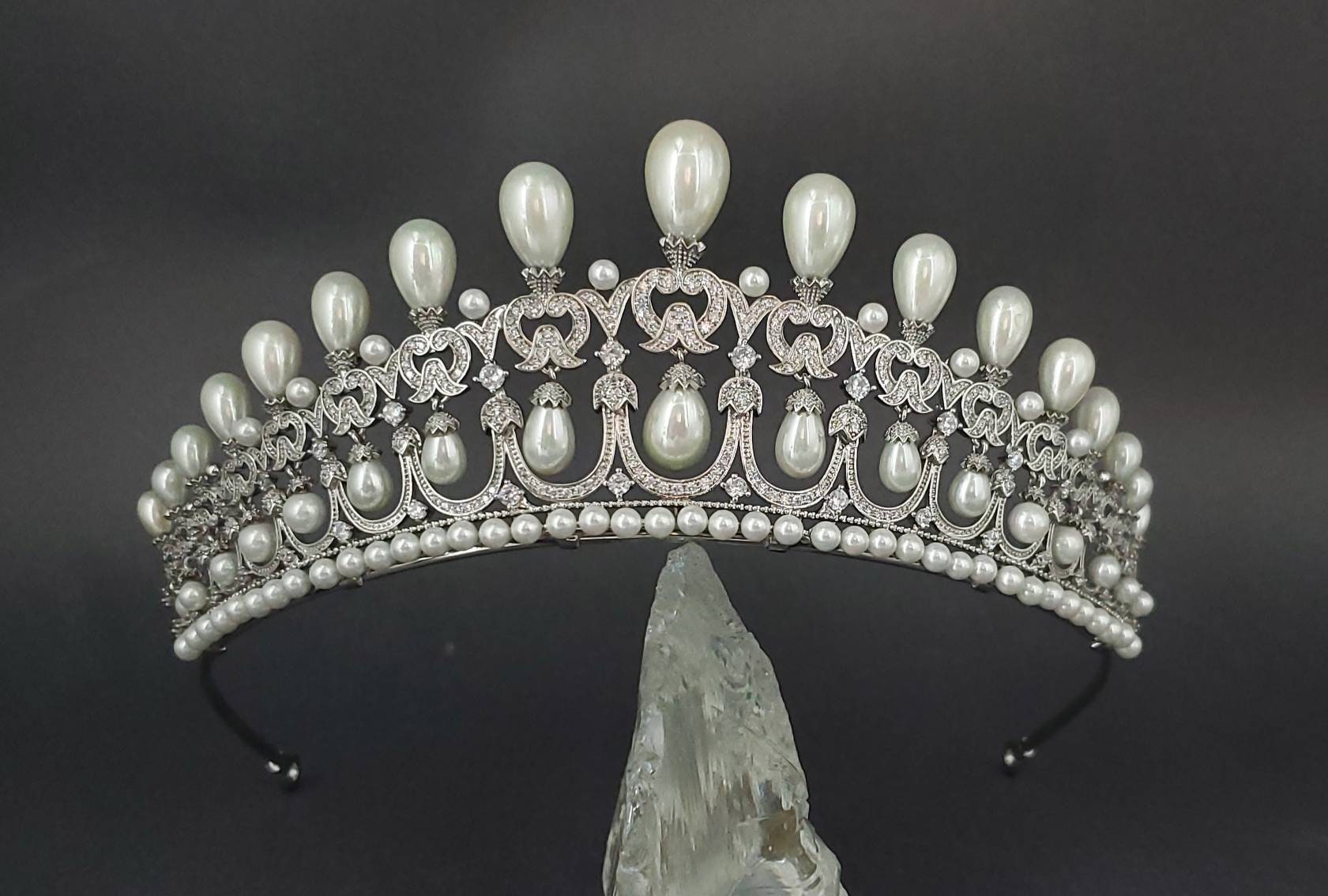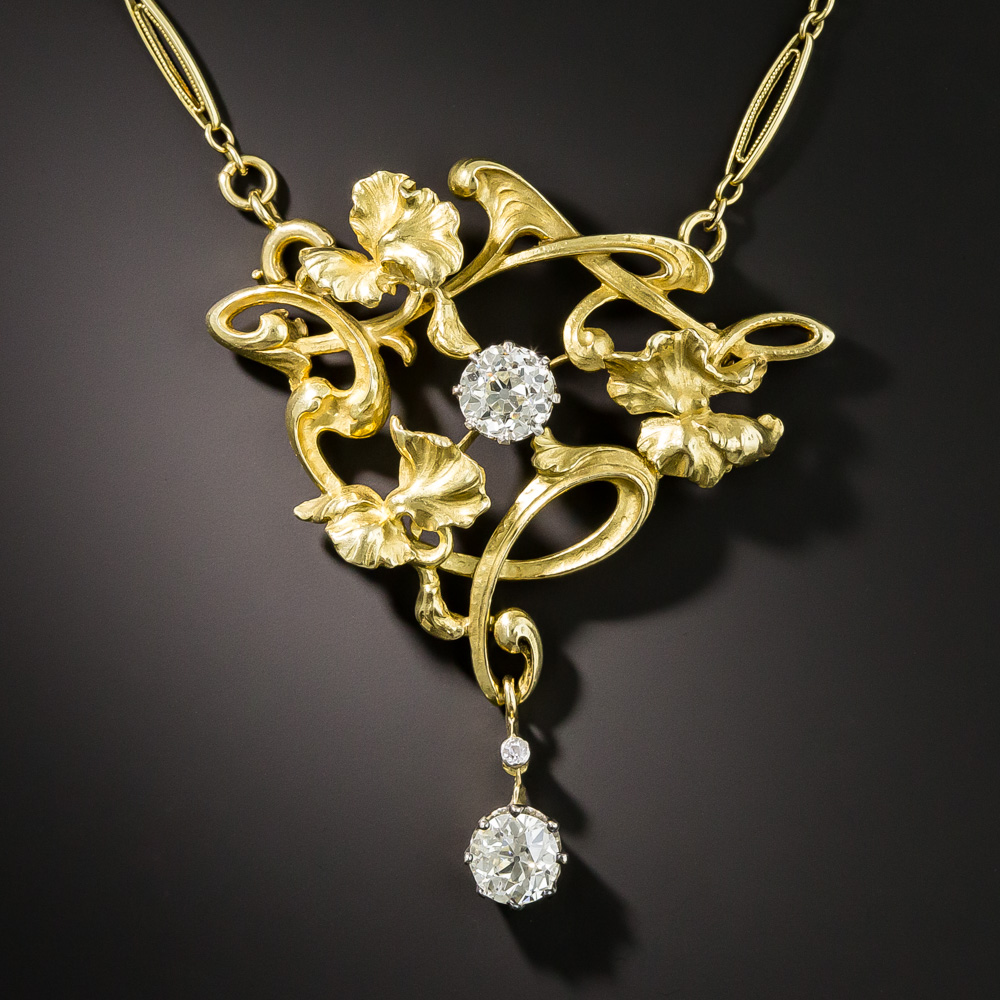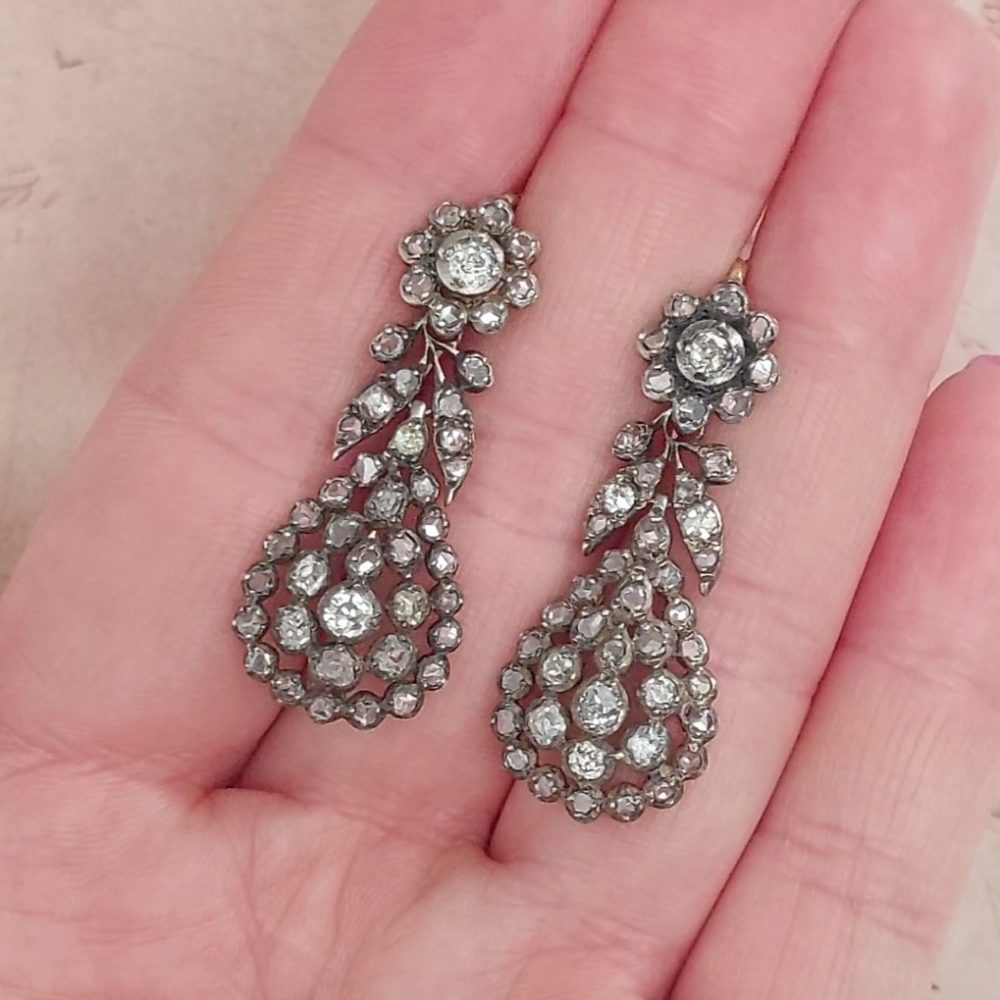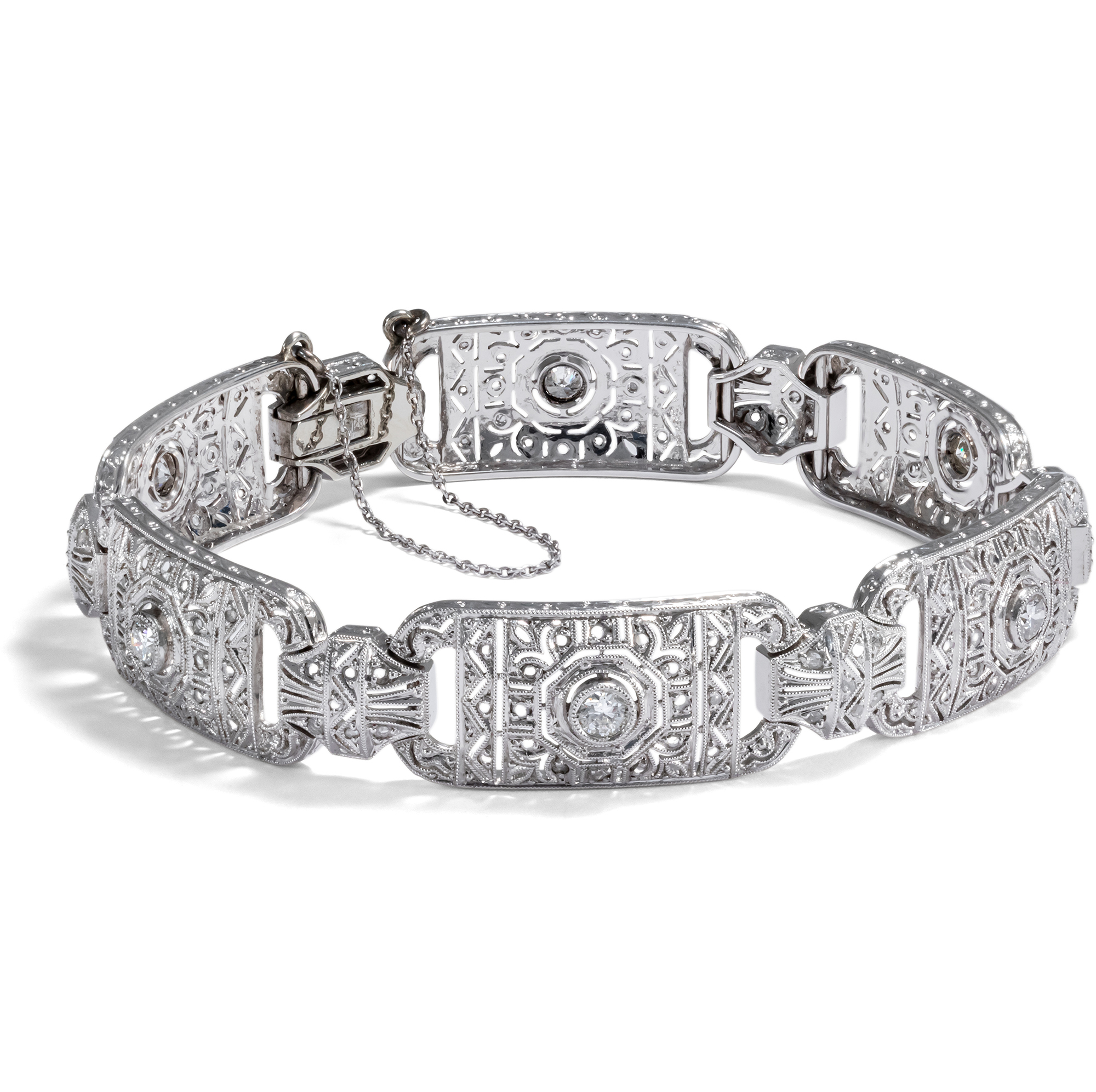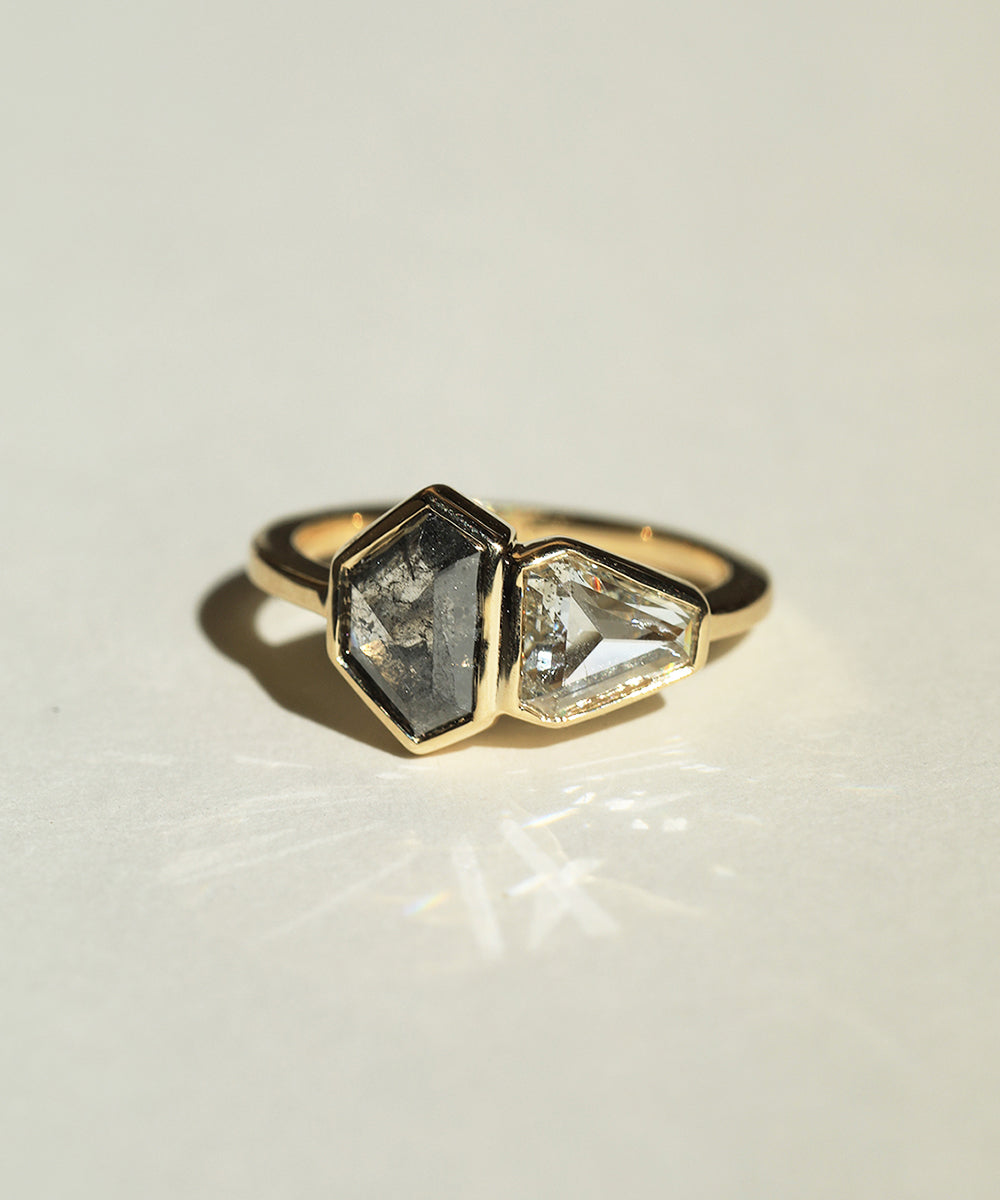
Step into the enchanting world ofantique diamondjewelry, where each piece tells a story of a bygone era, capturing the essence of timeless elegance. Antique jewelry holds a unique charm, offering exquisite craftsmanship and a glimpse into the rich history and traditions that have shaped the art of adornment.
In this blog, we embark on a journey through the ages, exploring antique diamond jewelry's allure and enduring appeal.
History Of Antique Diamond Jewelry
The history of antique diamond jewelry is a captivating journey through various eras, each leaving its own distinctive mark on the art of adornment. Let's traverse the timeline of antique diamond jewelry to unravel the evolution of styles and the cultural influences that have shaped these timeless treasures.
Georgian Era (1714-1837)
The Georgian era marked the beginning of antique diamond jewelry as we know it. During this period, diamondswere often set in silverto enhance their sparkle. Rose-cut diamonds, characterized by a flat base and facets rising to a pointed top, were popular in this era. Intricate designs, such as floral motifs and bows, reflected the elegance of the time.
Victorian Era (1837-1901)
Queen Victoria's lovefor jewelry greatly influenced the Victorian era's aesthetic. Early Victorian jewelry embraced romantic and sentimental themes, with acrostic jewelry using gemstonesto spell out messages. Later in the era, the discovery of diamond mines in South Africa led to the popularity of diamonds in intricate settings, including cluster designs and serpent motifs.
Edwardian Era (1901-1910)
A shift towards light and delicate designs characterized the Edwardian era. Platinumbecame a favored metal due to its strength and malleability, allowing for intricate lace-like patterns and filigree work. Diamonds were often paired with pearls or other colored gemstones to create ethereal and feminine pieces.
Art Nouveau (1890-1910)
Art Nouveau marked a departure from traditional jewelry styles. Characterized by flowing lines and organic motifs inspired by nature, antique diamond jewelry from this era often featured asymmetrical designs, whiplash curves, and motifs such as flowers, insects, and peacock feathers. The emphasis was on expressing individuality and breaking free from rigid conventions.
Art Deco (1920s-1930s)
The Art Deco era brought a resurgence of geometric designs and bold, contrasting colors. Symmetry, clean lines, and materials like onyxand coral were prominent in antique diamond jewelry of this period. The influence of Egyptian and African art also contributed to the bold and glamorous aesthetic.
Mid-Century Modern (1950s-1960s)
Post-World War II, there was a return to simplicity and elegance. Antique diamond jewelry from this period often featured clean lines, classic designs, and the use of white gold. The focus was on the brilliance of diamonds, with popular cuts including the round brilliant and baguette.
Contemporary Vintage Revival
In recent years, there has been a resurgence of interest in antique diamond jewelry, leading to a contemporary vintagerevival. Designers draw inspiration from different historical eras, creating pieces that blend the charm of the past with a modern twist. Vintage-inspired engagement rings, cluster earrings, and intricate brooches continue to captivate enthusiasts.
How To Identify Authentic Antique Diamond Jewelry Pieces
Identifying authentic antique diamond jewelry requires a keen eye, attention to detail, and some knowledge of historical periods. Here are steps to help you determine the authenticity of antique diamond jewelry:
- Examine the Craftsmanship- Authentic antique diamond jewelry often displays meticulous craftsmanship. Look for signs of handiwork, such as intricate details, delicate settings, and evidence of manual labor. Irregularities in symmetry and slight variations in stone cuts may indicate that the piece is handmade.
- Assess the Materials Used - Antique jewelry was typically crafted using materials popular in its respective era. For example, platinum became prevalent during the Art Deco period, while gold and silver were more common in earlier periods. Examine the metal, settings, and any accompanying gemstones to ensure they align with the historical context.
- Understand Historical Periods - Familiarize yourself with the characteristics of different historical periods, such as Victorian, Edwardian, Art Deco, and Art Nouveau. Each era had distinctive design elements, and knowing these features can help you identify the time period in which a piece might have been created.
- Verify Diamond Cuts- Different historical periods favored specific diamond cuts. For instance, rose-cut diamonds were popular in Georgian and Victorian jewelry, while the round brilliant cut gained prominence in the early 20th century. Examine the diamonds for their cut and facet patterns to determine if they align with the expected style of the era.
- Check for Hallmarks and Maker's Marks- Authentic antique pieces often bear hallmarks or maker's marks, providing clues about their origin and authenticity. Look for stamps or engravings on the metal, and research any identified marks to determine their significance.
Antique Diamond Cuts
Antique diamond cuts reflect the evolving styles and preferences of different historical periods. Here are several types of antique diamond cuts that were popular during various eras:
- Rose Cut- The rose cut, popular in the 17th to 19th centuries, features a flat base and a dome-shaped crown adorned with triangular facets. This cut resembles the petals of an opening rosebud, hence its name. Rose-cut diamonds were widely used in Georgian and Victorian jewelry.
- Old Mine Cut - The old mine cut, prevalent in the 18th and 19th centuries, is characterized by a cushion-shaped outline with a high crown, a small table, and a large culet (a flat facet at the bottom). These diamonds often exhibit a distinctive "chunky" appearance and were commonly used during the Georgian and Victorian eras.
- Old European Cut - The old European cut, popular from the late 19th to the early 20th centuries, evolved from the old mine cut. It features a round shape with a higher crown, a smaller table, and a smaller culet compared to the old mine cut. Old European cut diamonds were prominent during the Edwardian and Art Deco periods.
- Single Cut - The single cut, popular in the early 20th century, is a simple diamond cut with only 17 or 18 facets. It is often used in smaller diamonds, such as those in pave settings. Single-cut diamonds were commonly seen in Art Deco and Retro jewelry.
- Baguette Cut- The baguette cut, characterized by a long rectangular shape with step-cut facets, gained popularity during the Art Deco era. Baguette-cut diamonds were frequently used as accent stones in geometric and symmetrical designs.
- Asscher Cut- The Asscher cut, developed in the early 20th century, has a square or slightly rectangular shape with deeply cut corners. It features a step-cut crown and larger step-cut facets, creating a distinctive and elegant appearance. Asscher-cut diamonds were widely used during the Art Deco period.
- Emerald Cut - The emerald cut, with its rectangular shape and cut corners, became popular in the Art Deco era and continues to be favored today. It features step-cut facets that create a hall-of-mirrors effect, emphasizing clarity and showcasing a diamond's natural brilliance.
List Of Best Antique Diamond Jewelry
Here are types of antique diamond jewelry, each representing distinct styles and periods:
Victorian Antique Diamond Engagement Rings
Intricate and ornate designs characterize Victorian-era engagement rings. Standard features include floral motifs, filigree work, and rose-cut diamonds. Rings from the early Victorian period might showcase sentimental symbols, while the later Victorian era embraced bold and dramatic designs.
Art Deco Antique Diamond Brooches
Brooches from the Art Deco period (1920s-1930s) feature geometric shapes, bold colors, and intricate patterns. These brooches often showcase the use of diamonds alongside other gemstones, reflecting the glamour and sophistication of the Roaring Twenties.
Edwardian Tiara
Edwardian tiaras were popular during the early 20th century. Crafted from platinum, they featured delicate designs adorned with diamonds. The pieces often showcased lace-like filigree work and intricate detailing, reflecting the elegance of the Edwardian era.
Art Nouveau Antique Diamond Necklaces
Art Nouveau necklaces, popular in the late 19th to early 20th centuries, embraced flowing, organic designs inspired by nature. These necklaces often featured motifs such as flowers, vines, and butterflies, intricately crafted with diamonds and other gemstones.
Georgian Antique Diamond Earrings
Georgian earrings, datingfrom the 18th and early 19th centuries, were characterized by intricate metalwork and the use of foil-backed diamonds. Designs ranged from simple studs to elaborate chandelier styles, reflecting the fashion of the Georgian era.
Art Deco Antique Diamond Bracelets
Art Deco braceletsfrom the 1920s and 1930s are known for their bold geometric designs. Straight lines, symmetry, and the use of calibre-cut diamonds and colored gemstones are common features. These bracelets complemented the fashion and architecture of the Art Deco period.
Care Tips For Antique Diamond Jewelry
Caring for antique diamond jewelry requires a delicate touch and specific considerations to preserve its beauty and historical value. Here are some care tips:
Gentle Cleaning
Clean antique diamond jewelry with a soft brush and mild soapy water. Avoid using harsh chemicals or abrasive cleaners, as they can damage delicate settings and potentially affect the patina that has developed over time.
Professional Cleaning And Inspection
Schedule regular professional cleanings and inspections. A jeweler experienced in handling antique pieces can clean the jewelry thoroughly and check for loose stones or signs of wear.
Avoid Ultrasonic Cleaners
Steer clear of ultrasonic jewelry cleaners, as they can be too harsh for antique jewelry. The vibrations may loosen stones, and the cleaning solution may damage certain materials.
Soft Storage
Store antique diamond jewelry in a soft and padded container or jewelry box. Avoid tossing pieces together, as diamonds can scratch other gemstones and metals. Consider storing each piece separately to prevent tangling and scratching.
Why To Buy Antique Diamond Jewelry
Buying antique diamond jewelry is like owning a piece of time-traveled elegance. Here's why you might want to consider it:
Unique Design
Antique pieces often feature unique and intricate designs that set them apart from contemporary jewelry.
The craftsmanship reflects the artistry and attention to detail of skilled artisans from the past.
Individuality
Antique jewelry is inherently unique, with limited availability.
Wearing an antique piece is a statement of individuality, distinguishing you from those with mass-produced, modern jewelry.
Investment In Sustainability
Choosing antique diamonds is an eco-friendly option as it avoids supporting new diamond mining.
Contribute to sustainability by recycling and reusing existing materials.
Emotional Value
Antique jewelry can carry sentimental value, especially if passed down through generations.
Wearing a piece with a history can evoke a sense of connection to the past.
Timeless Appeal
Designs that have withstood the test of time exude a timeless beauty.
Antique jewelry doesn't succumb to fleeting trends, maintaining its appeal across generations.
Craftsmanship And Quality
Antique pieces often showcase exceptional craftsmanship and attention to detail. Artisans of the past took pride in their work, resulting in jewelry that stands up to scrutiny even today.
Conversation Starter
Wearing antique jewelry invites curiosity and admiration, providing an excellent conversation starter. Sharing the history and uniqueness of your piece can be a source of pride and connection.
Antique Diamond Jewelry - FAQs
How Can I Determine The Authenticity Of Antique Diamond Jewelry?
Authenticating antique diamond jewelry involves assessing craftsmanship, materials, and historical context. Seek the expertise of a reputable appraiser or jeweler with experience in antique pieces to verify authenticity.
Are There Specific Eras That Are More Valuable In Antique Diamond Jewelry?
Specific eras, such as the Victorian, Edwardian, and Art Deco periods, are often considered more valuable due to their distinctive designs and historical significance. However, the value ultimately depends on factors like rarity, craftsmanship, and overall condition.
Can I Resize Or Modify Antique Diamond Rings To Fit My Finger?
Resizing or modifying antique diamond rings should be approached with caution. It's recommended to consult with a skilled jeweler who specializes in antique pieces to discuss potential alterations that preserve the integrity of the design and craftsmanship.
How Do I Care For Antique Diamond Jewelry To Prevent Damage?
Proper care involves gentle cleaning with mild soapy water, avoiding harsh chemicals, and storing the jewelry in a soft, padded container. Regular professional cleanings and inspections by an experienced jeweler are also advisable to address any issues promptly.
Is It Possible To Insure Antique Diamond Jewelry?
Yes, it is possible to insure antique diamond jewelry. To do so, you will need an accurate appraisal from a qualified appraiser. Insurance can help protect the financial value of the jewelry in case of loss, theft, or damage. Be sure to choose a policy that covers the specific needs of antique pieces.
Conclusion
Antique diamond jewelry is a testament to the enduring allure of craftsmanship, history, and timeless beauty. Each piece tells a unique story, weaving together the artistry of bygone eras with the brilliance of diamonds. As custodians of these treasures, we are responsible for approaching their care with delicacy and appreciation, preserving not only their monetary value but also the rich tapestry of human history they represent.
Whether it's the intricate designs of the Victorian era, the geometric brilliance of Art Deco, or the delicate femininity of Edwardian pieces, antique diamond jewelry transcends mere adornment, becoming a bridge that connects us to the elegance and sophistication of the past. As we continue to cherish and pass down these extraordinary pieces, we ensure that the legacy of antique diamond jewelry remains eternally radiant.
